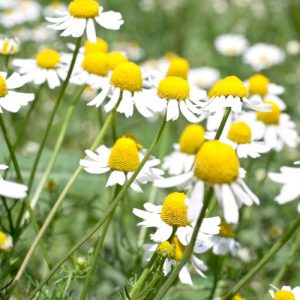To Tea or Not to Tea
Why am I talking about tea in a gardening blog?
Well… tea and it’s production have been a part of my life from an early age, because I lived in a hippie town near the Celestial Seasonings factory. Each year around cold season our class would go on a school trip to the factory so that the peppermint room could clear our collective sinuses (and to learn about a successful local business!). Tea was the ultimate panacea: green for energy, chamomile for relaxation, licorice for sore throats, yerba mate for more sustained energy, and so on.
As I moved through life and around the world my relationship with tea has evolved and deepened. I now know enough to qualify that tea specifically refers to products of the camellia sinesis plant, while every other plant + hot water drink is an infusion or possibly a decoction. For the purposes of this blog, I am going to lump them all in one flavorful basket and call them tea.
So what does tea have to do with Alaska?
Tea of various plants has been harvested in Alaska by native cultures approximately since humans first came here. The estimates of that time frame are constantly shifting with new archaeological discoveries near the Bering Strait land bridge; suffice it to say they crossed thousands and thousands of years ago. So yes, tea literally has deep roots in Alaska :-D.
Labrador tea grows wild in many parts of the state, and is still gathered and used for tea today. Willow bark tea, spruce tip tea, raspberry leaf tea and wild chamomile are only a few of the many teas that can be gathered wild here. The Boreal Herbal by Beverly Gray is an excellent reference for identifying and learning to prepare the wild plants of the far north.
Now we’re getting to the gardening part, I am going to share with you, my very dear readers, some of the extremely easy to grow plants for starting a tea garden in Anchorage.
One of th e hands down easiest tea plants I have grown in Alaska is German Chamomile (Martricara recutita), a close cousin of the wild chamomile mentioned earlier. German chamomile is used around the world for tea, and has the characteristic apple-like smell expected from a really good cup. This makes it a pleasantly fragrant flower to grow near a sunny walkway or path. Starting around midsummer I harvest the blossoms and dry them. To pick without bruising the cone I pluck the head by grasping the blossom gently between my middle and forefingers, then popping or slicing across the stem with my thumbnail. Scissors are also an option.
e hands down easiest tea plants I have grown in Alaska is German Chamomile (Martricara recutita), a close cousin of the wild chamomile mentioned earlier. German chamomile is used around the world for tea, and has the characteristic apple-like smell expected from a really good cup. This makes it a pleasantly fragrant flower to grow near a sunny walkway or path. Starting around midsummer I harvest the blossoms and dry them. To pick without bruising the cone I pluck the head by grasping the blossom gently between my middle and forefingers, then popping or slicing across the stem with my thumbnail. Scissors are also an option.
Chamomile plants will grow profusely, flower through much of the summer and are very pollinator and child friendly. They will grow new flowers within a few days after each harvest. At the end of the summer they will self-seed if allowed, to annually yield a fragrant, flavorful crop that brings the taste and smell of summer into a cozy winter evening.
Another easy-peasy plant to grow for tea is Peppermint (I haven’t heard of a difficult variety, but please mention in the comments if you know one). Be careful where you put it, because this one can be a perennial bully! I recommend planting it in either in a container or a forlorn corner of your yard, where mowing around it will keep it in check. I let mine go to flower at the end of the season, and it is constan tly full of bees once it has bloomed. Harvesting the mint leaves before flowering, or on a rainy day will help you to coexist with your tiny winged gardening helpers. The leaves from mint varieties are delicious as a dried tea or fresh in a glass of water, salad or used in cooking. For a slightly deeper flavor, try cold-brewing peppermint tea (steep time 20-30 minutes at room temperature) rather than a typical hot preparation.
tly full of bees once it has bloomed. Harvesting the mint leaves before flowering, or on a rainy day will help you to coexist with your tiny winged gardening helpers. The leaves from mint varieties are delicious as a dried tea or fresh in a glass of water, salad or used in cooking. For a slightly deeper flavor, try cold-brewing peppermint tea (steep time 20-30 minutes at room temperature) rather than a typical hot preparation.
I like my peppermint tea with a little body, which brings me to my third simple tea plant: Tarragon. Up here, Russian Tarragon grows easily and well. Expect a plant around 4-5 feet tall. The leaves have  a light cinnamon or peppery flavor, which is really nice to add gravitas to salads, integrate into cooking or blend into teas. This is a spice commonly used in meat dishes. To release more flavor or scent from the fresh leaves, bruise them. I like to add a dash of dried Tarragon to my peppermint tea for a more robust, savory flavor. The plant itself is an effective way to disguise unsightly pipes or conduit by your house without restricting access.
a light cinnamon or peppery flavor, which is really nice to add gravitas to salads, integrate into cooking or blend into teas. This is a spice commonly used in meat dishes. To release more flavor or scent from the fresh leaves, bruise them. I like to add a dash of dried Tarragon to my peppermint tea for a more robust, savory flavor. The plant itself is an effective way to disguise unsightly pipes or conduit by your house without restricting access.

What about local plants for tea?
Blueberry leaves
High bush berry leaves
Cranberry leaves?